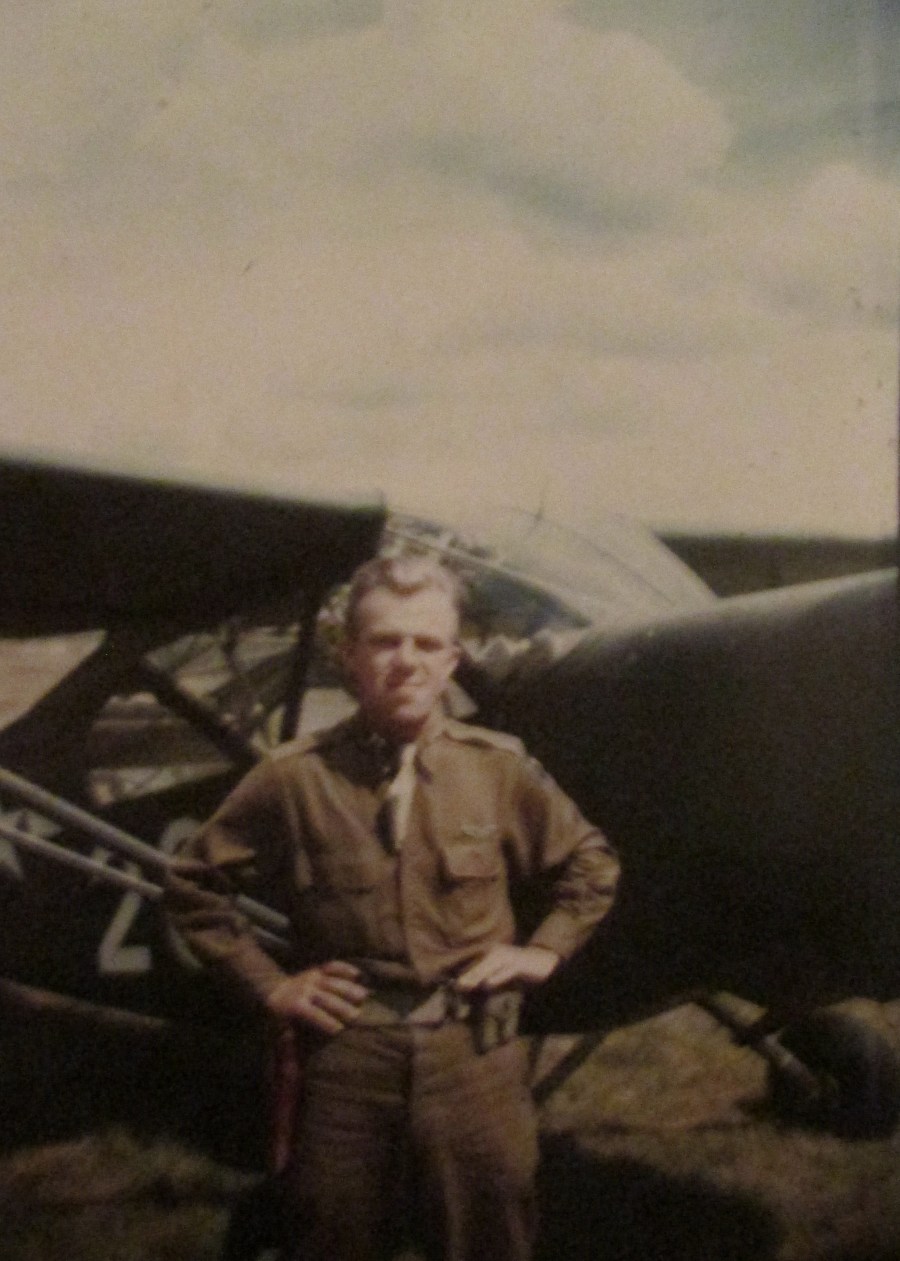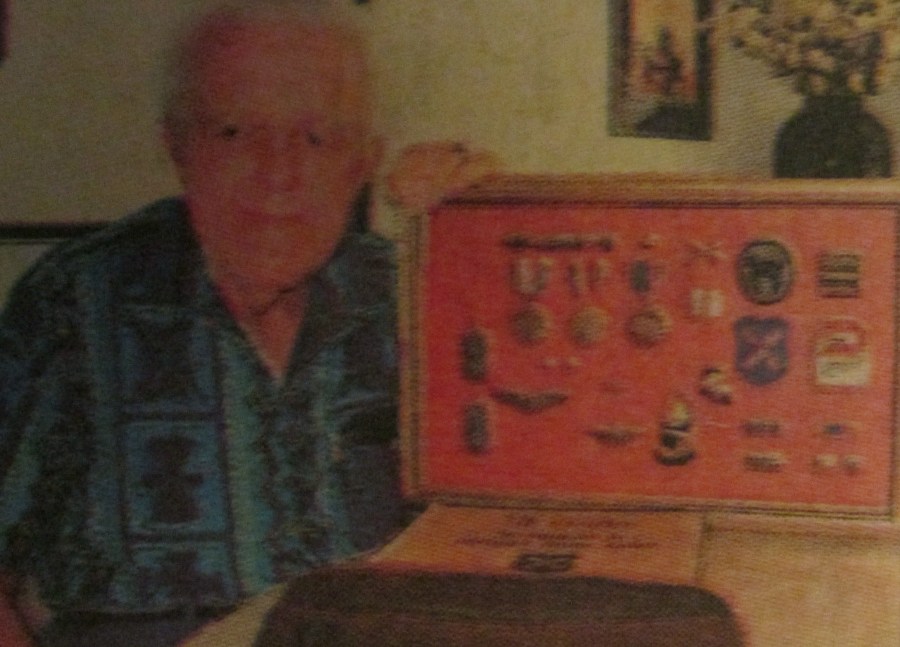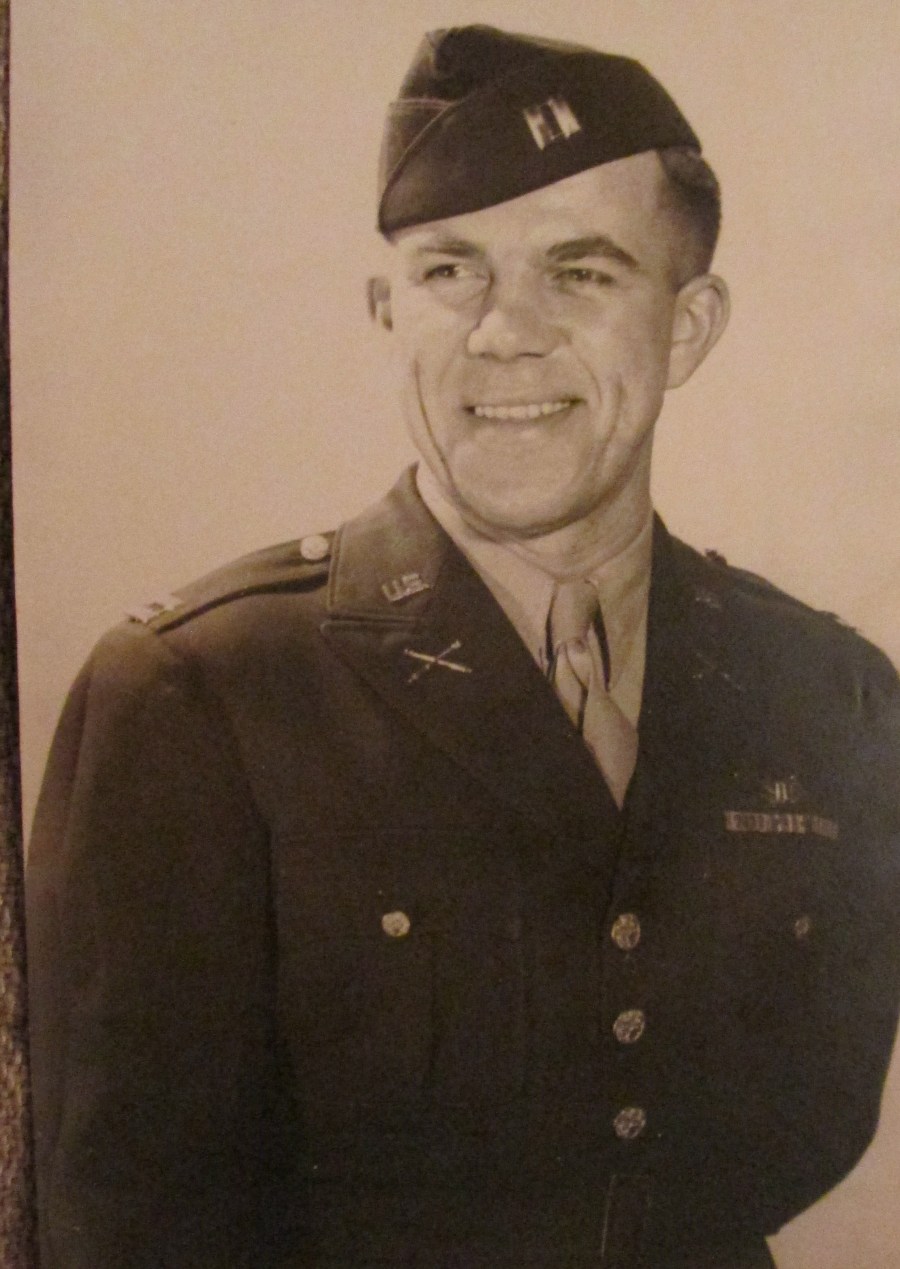Capt. Johnson: the Piper Cub beat the Germans – As a military plane it had no equal, he says
The Piper Cub, used as an artillery spotter plane, did more to defeat the German Army in World War II then any other American airplane, according to Capt. John Johnson.
“The Air Force just went over and dropped bombs on German cities, but the Army’s Piper Cub observer planes spotted enemy positions for American artillery that tore up the German artillery and troops,” he said. “These Cubs did more damage to the Germany Army than our bombers and fighters.”
These little single-engine, fabric-covered airplanes with their 65-horsepower engines flew as low as 200 feet over enemy lines at speeds as slow as 55 mph looking for German artillery, troops or anything else the enemy had on the ground. Observer pilots would call in the map coordinates of enemy positions. Seconds later, American artillery would obliterate the objective if everything went as planned.
Johnson, now 85, was assigned as a forward aerial observer who flew an L-4 Cub as part of the 12th Corps Artillery assigned to Gen. George Patton’s 3rd Army in Europe in the summer of 1944, shortly after the invasion of Normandy.
“I flew my Cub the 90 miles across the Channel to the Cherbourg Peninsula,” he said. “We stayed on the peninsula until Patton’s army was put into action.”
Johnson flew for the 12th Corps from August 1944 until the end of the war. There were three aerial observer pilots assigned to the 12th Corps Artillery. The commanding officer, a major, was off doing other things, so the spotter duties were assigned to him and a captain who ran the operation in the major’s absence.
“Pretty soon the captain and I were going up alternately to spot for the artillery. In school, we were taught to stay 200 yards behind the front lines. You couldn’t see far into enemy territory from that position. So we began flying along the front lines and then we flew forward of our lines over enemy territory. We ended up dodging German artillery fire as well as ours,” Johnson recalled.
Most of the time, when the Germans saw the low-flying, green spotter planes flying over, they would shoot at them with their 88 mm anti-aircraft guns. If one of these shells had hit their mark, they would disintegrate a Cub.
When the shooting started, Johnson would take counter-measures to dodge the incoming enemy fire by flying erratically and quickly diving to get out of the line of fire. It worked, but occasionally, the enemy fire came too close for comfort.
“One time I was flying low over German lines and I got shot up pretty bad with a German burp gun. I was flying about 200 feet and all of a sudden it started snowing inside my cockpit. What happened was that bullets from a German sub-machine gun penetrated the bottom of my Club. It sent wood splinters from the plywood flooring all through my cabin,” he said.
Another time, flak from an 88 almost got him.

1st Lt. John Johnson stands in front of his L-4 Piper Cub somewhere in Europe during World War II. Photo provided
“I thought my observer in the back seat had hit me over the head. I turned around to yell at him and saw this big, black cloud of smoke (from a German 88 anti-aircraft shell exploding) beside the plane,” he said. “When I returned to base, I told my mechanic to check the plane for damage. He found two shrapnel holes about the size of a pencil right next to each other that had gone right through the laminated wooded propeller. We had no spare propellers, so they filled the holes with canvas … and I flew with that propeller for the rest of the war.”
Johnson wasn’t impressed with the Air Force’s capabilities during the Battle of the Bulge.
“The Air Force stood down during the German advance at the Bulge. But we were out there flying every day at 500 to 600 feet,” he said, ‘weather be damned.'”
What made the L-4 Piper Cub the perfect plane for artillery spotting was its versatility. They could not only fly low and slow with ease so an observer had time to take a good look at the enemy terrain below, but they could also land and take off in very little space.
“Given the wind conditions, I could land and take off in 19 inches,” Johnson said. “If the wind was blowing at 30 miles an hour, I almost had enough lift to take off just by pulling back on the stick.”
It was somewhere along about six months before the end of the war that an SS Mountain Division was playing havoc with segments of Patton’s 3rd Army. They were capturing American units, taking prisoners and disappearing.
“Finally, the Army got word to do something about the SS Mountain Division. The word came down to the 12th Corps, which came down to the 12th Corps Artillery, which came down to Brig. Gen. John Lentz (the artillery commander) who told me to go find the SS guys,” Johnson said. “I just happened to fly over a German town with a number of U.S. Army trucks, but I couldn’t see any American soldiers. Usually when we flew over, our guys would come out and wave at us.”
There was something wrong.
“I circled over the town and then I flew over a nearby wooded area where I started getting German machine-gun fire from the woods. I climbed up to 10,000 feet and tried to call my unit that was 20 miles away on my 5-mile radio.
“I couldn’t get them, but I could see the U.S. 71st Division going along a road off in the distance. I landed (near the 71st) and waited for a captain to come along in a Jeep. I told him about the SS unit in the woods and explained that the Germans were pulling out and heading southwest away from the Americans.
“The 71st Division sent a whole string of men and guns after the SS Mountain Division. They chased the Germans through the town, up over the hill and captured the whole outfit,” he said.
“When I flew back and told Gen. Lentz, he was ecstatic. He said he was going to put me in for a Silver Star, but I never received it. I found out later that the medal was only awarded for ‘exceptional bravery under fire,'” Johnson said.
“Our primary job was to look for German artillery. Every once in a while, you would see a blink on the ground or a couple of blinks. That was probably German 88 anti-aircraft artillery shooting at us,” he said. “We would call in the coordinates where we saw the ground blinks to our fire direction center. An officer would relay our information by phone to the closest artillery unit. Forty seconds later, the German artillery would be knocked out.”

Capt. John Johnson of Port Charlotte, Fla. is shown with his World War II medals, dog tags and insignias. Sun photo by Don Moore
Toward the end of the war, Johnson was flying in his spotter plane over Bonn, Germany, and located a battery of 88s in a park along a river. He called in the coordinates of the enemy artillery.
“All of a sudden, I was flying over watching (for the American return fire). I saw this huge explosion when the German artillery was hit by 8-inch shells from the 12th Corps. After we took Bonn, I found the German 88 battery. The four guns looked like they had been run through a grinder,” he said.
Even the German high command was impressed with the speed and accuracy of the American return artillery fire.
“At the end of the war, the German high command wanted to see the American automatic artillery. They said return fire from American artillery was immediate and accurate. They thought we had to be using some kind of special gun. We told them it wasn’t automatic artillery — it was Piper Cub spotter planes calling in coordinates.”
This story was first published in the Charlotte Sun newspaper, Port Charlotte, Fla. on Monday, July 7, 2003 and is republished with permission.
Click here to view the War Tales fan page on FaceBook.
Click here to search Veterans Records and to obtain information on retrieving lost commendations.
All rights reserved. This copyrighted material may not be republished without permission. Links are encouraged.

Reblogged this on Lest We Forget and commented:
Another interesting War Tales
Amazing story.
It reminded of the movie Battle of the Bulge where a Piper Cub is the star of the movie… well sort of.
Thanks for sharing this little piece of almost forgotten history.
My readers will like it I am sure.
Carl Saur flew a piper cub as an artillery spotter for the U.S. Army Air Corp in WW II. As the story above, he explained the challenge of staying below the artillery he called in while dodging enemy sniper fire. Mr. Saur, in his 90’s started crying as he told me about being ordered to stand down while the red army sacked Berlin including the rape and murder of the women as they screamed for help. Mr. Saur was a german farmer from New Braunfels, Texas and spoke fluent german.
this is a load of BULLSHIT john winthorp and my grandfather last name KILKENNY were the only two piper cub pilots from the 9th division in ww2,my grandfather is also only person to land his privately owned piper cub in PARIS on the city streets GET YOUR FACTS F!@#ING STRAIGHT, following freeing paris before troops pushed on